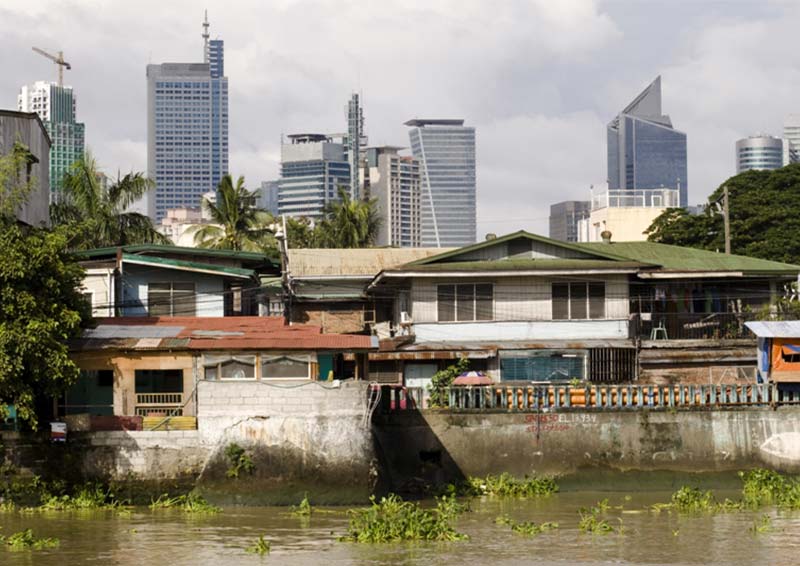Urbanisation definition
 Urbanisation can have numerous interpretations. It may describe the process by which areas are transformed from rural or semi-rural to urban. This means those areas start to display the characteristics of towns and cities, such as increased population, housing and social infrastructure, transport infrastructure (roads and railways) and leisure and other facilities.
Urbanisation can have numerous interpretations. It may describe the process by which areas are transformed from rural or semi-rural to urban. This means those areas start to display the characteristics of towns and cities, such as increased population, housing and social infrastructure, transport infrastructure (roads and railways) and leisure and other facilities.
As these towns and cities grow, they may experience increasing urban density: more people and employers move in necessitating new infrastructure to cater for them. The process may continue rapidly until it becomes ‘urban sprawl’ – which is when a town or city and its suburbs spread over previously undeveloped land. For more information see: Densification and Urban sprawl.
In another interpretation, urbanisation of a region or nation implies that the number of people living in areas classed as ‘urban’ has increased or is increasing (with a high average rate of change). This may place a heavy burden on existing infrastructure that is only relieved when more infrastructure is put into place.
A country may be said to be urbanised depending on the proportion of the population living in urban areas. For example, some may class a country as ‘urbanised’ if over 60%-70% of its population lives in urban areas. Others may have a higher or lower threshold.
Some countries such as Singapore, Kuwait and Monaco have 100% urbanisation. Other urbanisation rates include:
| Country | Proportion of population living in urban areas |
| Belgium | 98% |
| UK | 83.4% |
| France and Spain | 80% |
| Ireland | 63% |
| India | 34% |
| Sri Lanka | 18.5% |
Urbanisation is both a historical and global phenomenon. Human settlements become villages, which can grow into towns and then cities. Transformed in this way, they start to offer greater employment opportunities, the benefits of proximity, social interaction and knowledge acquisition, and the prospect of a 'better' life, thereby attracting more employers and people.
The process began millennia ago and is still continuing as rural culture becomes consumed by the urban. Over time this has seen an unprecedented movement of people into cities which become overpopulated and so must expand their infrastructural and social provision. Because in many cases the land to do this is not available or is at a premium, cities such as Chicago (and more recently London and other cities) are forced to build increasingly tall and dense buildings for residences and employment.
‘Going up’ has hitherto been one way to accommodate urbanisation and urban growth. But an increasing number of commentators, also propose using underground space to relieve the congestion of modern cities. This sees placing not only roads and railways underground, but also facilities that do not need to be on the surface, such as factories, waste disposal facilities, shopping centres, cinemas and theatres, and even offices and homes.
For more information see: Megatrends - Urbanisation_report.
[edit] Related articles on Designing Buildings Wiki
- City centre.
- Compact sustainable city.
- Conurbation.
- Densification.
- Engineering Smart Cities.
- Garden cities.
- Gentrification.
- Global smart cities market.
- Green belt.
- Hamlet.
- Megacity.
- Region.
- Smart cities need to find some smarter answers.
- Smart city.
- Suburb.
- The compact sustainable city.
- The Living City: Rethinking our role in the Digital Age.
- Town.
- Types of place.
- Urban.
- Urban fabric.
- Urban sprawl.
- Village.
Featured articles and news
Grenfell Tower Principal Contractor Award notice
Tower repair and maintenance contractor announced as demolition contractor.
Passivhaus social homes benefit from heat pump service
Sixteen new homes designed and built to achieve Passivhaus constructed in Dumfries & Galloway.
CABE Publishes Results of 2025 Building Control Survey
Concern over lack of understanding of how roles have changed since the introduction of the BSA 2022.
British Architectural Sculpture 1851-1951
A rich heritage of decorative and figurative sculpture. Book review.
A programme to tackle the lack of diversity.
Independent Building Control review panel
Five members of the newly established, Grenfell Tower Inquiry recommended, panel appointed.
Welsh Recharging Electrical Skills Charter progresses
ECA progressing on the ‘asks’ of the Recharging Electrical Skills Charter at the Senedd in Wales.
A brief history from 1890s to 2020s.
CIOB and CORBON combine forces
To elevate professional standards in Nigeria’s construction industry.
Amendment to the GB Energy Bill welcomed by ECA
Move prevents nationally-owned energy company from investing in solar panels produced by modern slavery.
Gregor Harvie argues that AI is state-sanctioned theft of IP.
Heat pumps, vehicle chargers and heating appliances must be sold with smart functionality.
Experimental AI housing target help for councils
Experimental AI could help councils meet housing targets by digitising records.
New-style degrees set for reformed ARB accreditation
Following the ARB Tomorrow's Architects competency outcomes for Architects.
BSRIA Occupant Wellbeing survey BOW
Occupant satisfaction and wellbeing tool inc. physical environment, indoor facilities, functionality and accessibility.
Preserving, waterproofing and decorating buildings.






















